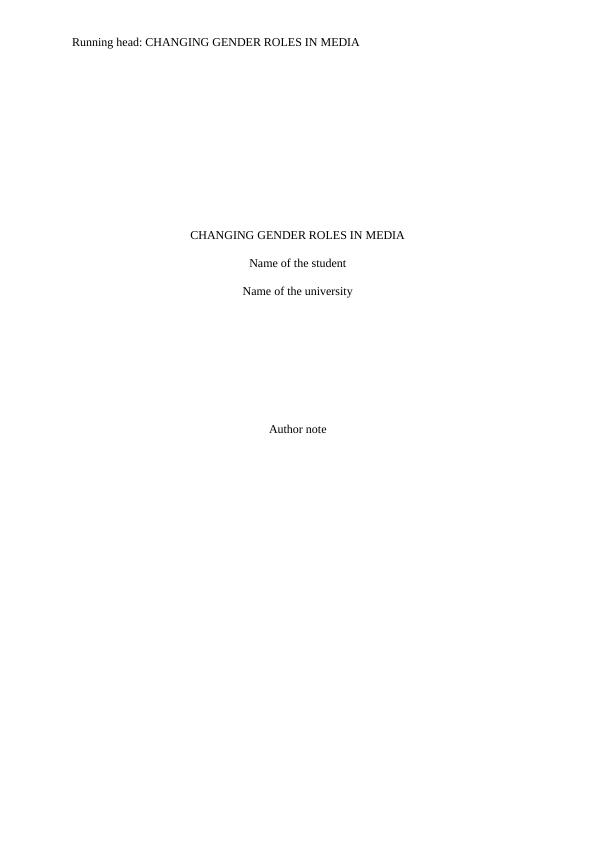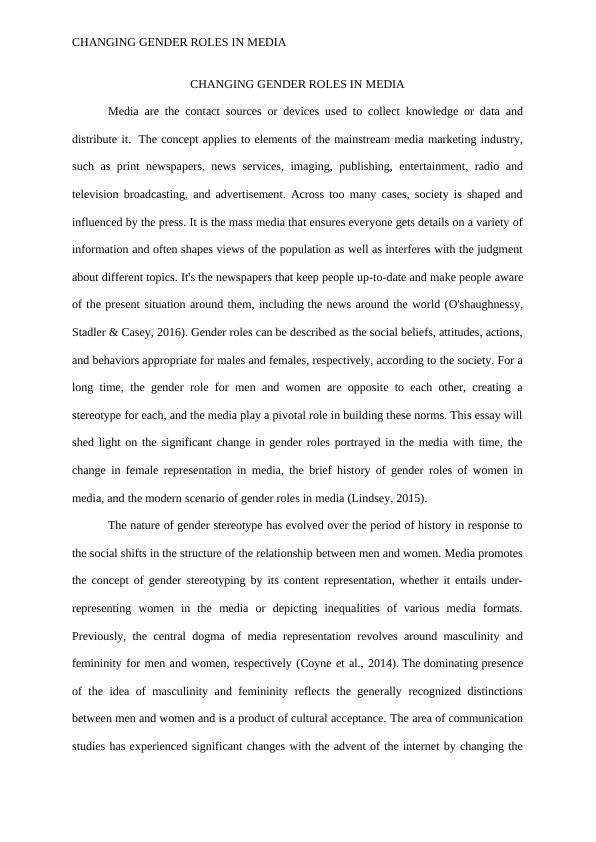Changing Gender Roles in Media | Discussion
The research proposal is about changing gender roles in media and the final essay will argue the changes seen in the portrayal of gender roles in society.
10 Pages2423 Words16 Views
Added on 2022-09-07
Changing Gender Roles in Media | Discussion
The research proposal is about changing gender roles in media and the final essay will argue the changes seen in the portrayal of gender roles in society.
Added on 2022-09-07
ShareRelated Documents
End of preview
Want to access all the pages? Upload your documents or become a member.
Gender Empowerment in Advertising
|5
|1060
|166
Gender Inequality and Friends
|19
|5975
|224
Stereotypes and Media Report Assignment
|5
|880
|76
Feminism and Sexuality
|7
|1399
|85
Gender Biasness in Society
|5
|973
|70
(Doc) Gender Biases in Society
|6
|1046
|35



